Pathways for Prosperity Commission. (2018). Charting Pathways for Inclusive Growth: From Paralysis to Preparation. Oxford, UK: Pathways for Prosperity Commission.
Charting Pathways for Inclusive Growth: From Paralysis to Preparation examines the impact of technological innovation on growth, jobs and livelihoods in developing economies. This report outlines five possible pathways that developing countries could adopt for future inclusive growth and jobs for people living in poverty. Optimism and collective action are needed – not policy paralysis by developing country governments.
The numbers about job losses – from 9% to 80% – caused by automation are misleading; they use technically flawed methodologies, and generally ignore the upsides of technological progress in creating new economic opportunities for workers, firms, and consumers.
Manufacturing isn’t the only way to transform and grow an economy. The report identifies five possible pathways that developing countries could adopt for future inclusive growth and jobs for people living in poverty.
There are three priorities that all countries should focus on to make the most of technology: countries need to be 'digital ready', they need to guide markets towards innovation, and they need to ensure the gains are inclusive.
Harnessing change will not happen by itself: citizens, policy makers, business leaders and civil society need to work together to chart a course for inclusive growth.
Today the world is witnessing the rise of many new frontier technologies. Some of these innovations, such as advancements in robotics and machine learning, are affecting production processes of goods and services. Others, such as improved communications through virtual reality and the internet of things, affect not only the wider systems of production but also how goods, services, and ideas are exchanged.
The current wave of technological change is unique in terms of the breadth of its scope and the pace of change (in particular, the fast-declining costs of frontier technology).
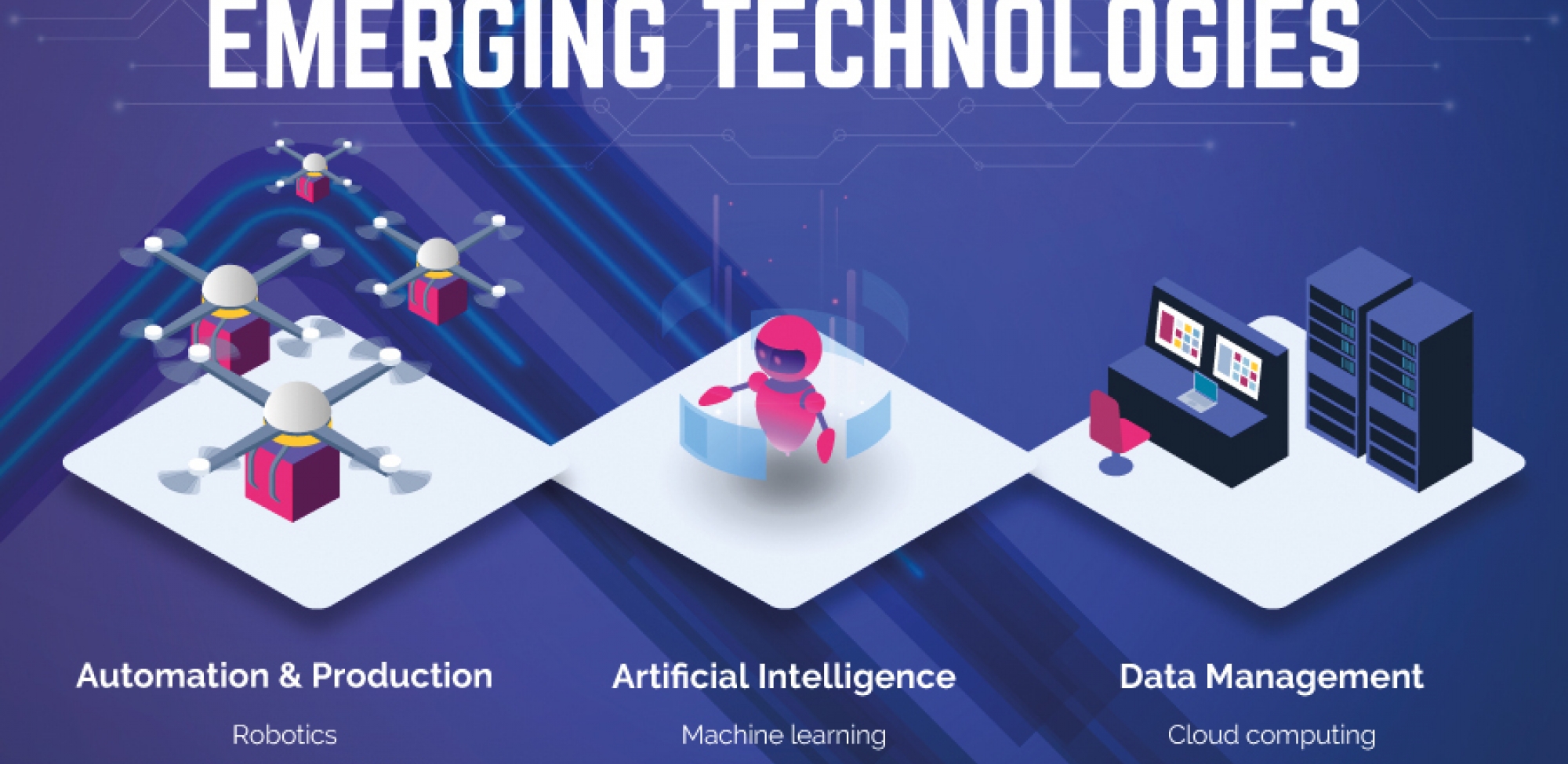
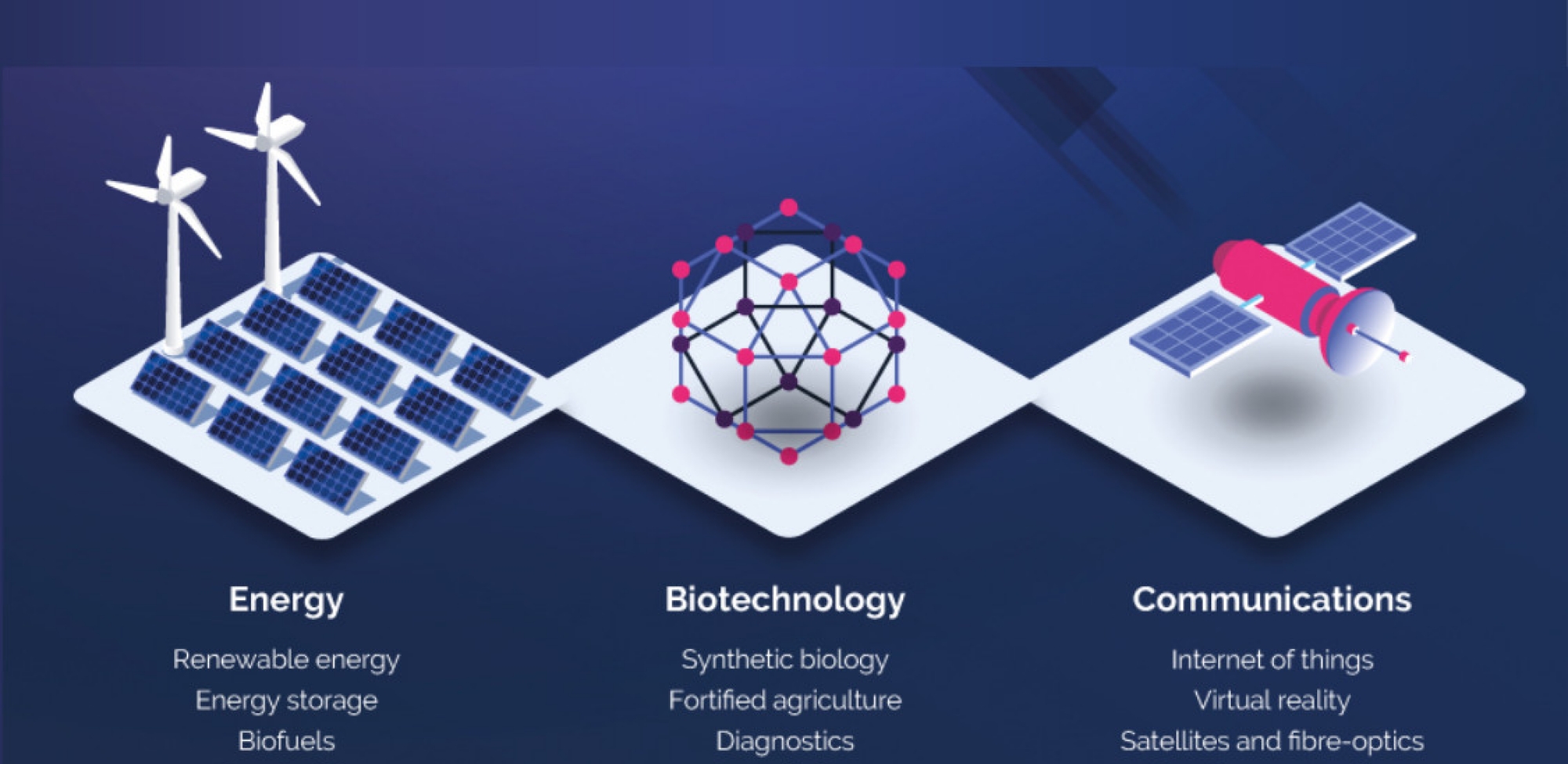
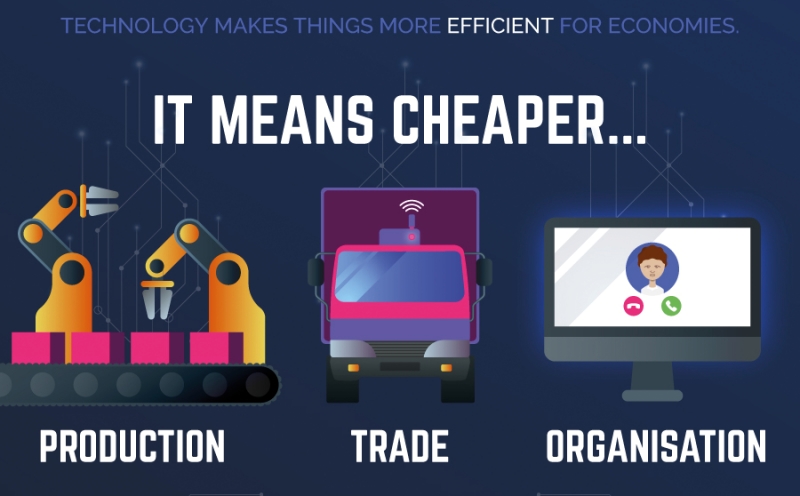
The global debate on technology and inclusive growth is narrowly focused on ‘job destruction’ from accelerating automation, suggesting that half of all jobs in OECD countries and two-thirds of all jobs in developing countries are already at risk.
Such numbers are misleading and create policy paralysis. Most are based on imperfect methodologies – they are hardly sound predictions of the future. These forecasts typically ignore the upsides of technological progress in creating new economic opportunities for workers, firms and consumers alike.
Fear is a poor guide for policy. Instead of scaremongering, this report identifies the opportunities and carefully articulates the challenges.
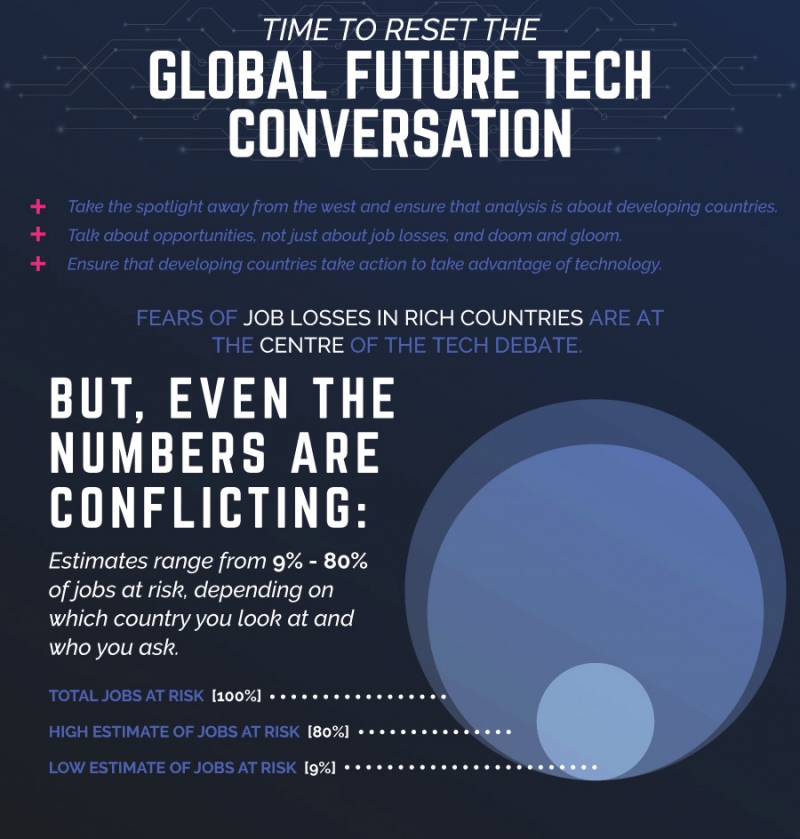
Technological progress leads to growth by allowing economies to create more value from available resources. In general, new technologies work along three cost drivers: production, exchange, and communication.
Looking back across history, there are key lessons to take into account when thinking about disruptive technological change:
- Local economic and social ecosystems make a big difference.
- The flow-on effects that work through the rest of the economy are essential for understanding the broader impact.
- While technological innovation does not typically 'destroy jobs' in aggregate, it certainly does disrupt jobs and lives. If change is poorly managed, socially and politically, now, just as in history, disruption will feed resistance to change, and the result is likely to be missed opportunities for inclusive growth.

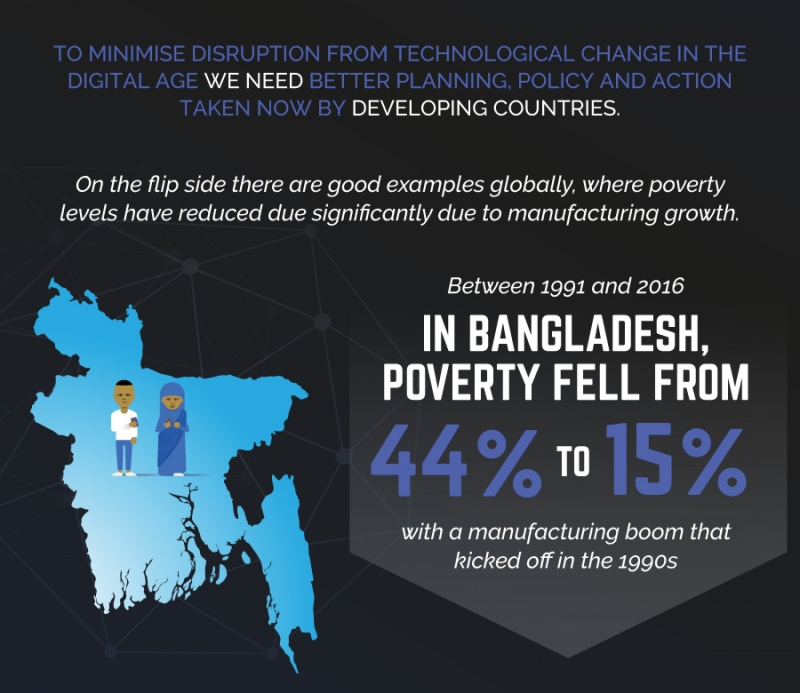
Discussions today would do well to focus more on how to foster better linkages between sectors benefiting from productivity growth and the rest of the economy.
Historical experience also shows that, while technological innovation does not typically ‘destroy jobs’ in aggregate, it certainly does disrupt jobs and lives. During the Asian boom, job opportunities emerged in urban areas, driving large-scale migration; in many countries as well as globally, this period of shifting global value chains also led to concerns about exclusion and inequality. If change is poorly managed, socially and politically, now, just as in history, disruption will feed resistance to change, and the result is likely to be missed opportunities for inclusive growth.
We do not provide a manual for policymakers; rather, we offer a vision for what is attainable in different contexts
Much like their predecessors, current crops of technological innovation are rapidly creating new and often unforeseen economic opportunities and disruptions. The pace, direction and magnitude of these changes are hard to predict. Many people think that because of potential impact on manufacturing, this could remove the pathway for economic development and growth.
This report offers a set of five alternative pathways for inclusive growth in a digital age. We do not provide a manual for policymakers; rather, we offer a vision for what is attainable in different contexts, and then develop a set of priorities which business, civil society, national governments, and international partners will jointly and urgently need to address.
Five possible pathways for prosperity being unlocked right now by technological innovations are:
Technological advancements (such as in data analytics, biotechnology, communications and logistics) can improve yields on farm and, importantly, boost the efficiency of agricultural supply chains, helping farmers to access markets.
Previous global value chains have been largely limited to trade in simple codifiable goods. Frontier communication technologies will drastically reduce the cost of information exchange and networking, making it possible to perform complex tasks remotely. This can open a pathway for developing countries to enter global chains in more complex goods.
Some business outsourcing (such as simple call centres) may be threatened by artificial intelligence, but fast-improving communication technologies, including virtual reality, could unlock trade in complex services that once demanded face-to-face contact. Developing countries may be ideally placed to export services that require human skills such as judgement, creativity and empathy.
Digital platforms (such as those for mobile money and taxi-hailing) can increase productivity in the informal sector. These technologies help connect informal workers – some of the most marginalised on the fringes of society – by linking them to formal markets and social services, making them part of the inclusive growth story.
Digital platforms and advances in logistics and supply-chain data management will drive growth by making it easier to move information and goods around domestic and regional economies. Fostering diverse linkages within an economy is a viable alternative to chasing export-led growth through global specialisation.
But, none of these positive growth and inclusion impacts are inevitable. Policymakers, business leaders and citizens have real agency, but also real responsibility and accountability. To capitalise now on the potential of the pathways set out here (and others), and to avoid economic, social and political dislocation, policymakers and businesses need to create the right environment for these pathways to emerge.
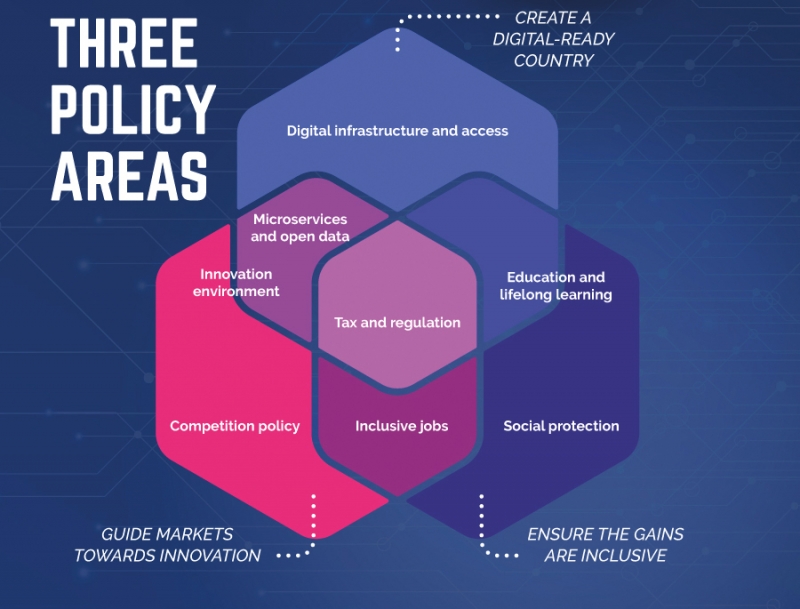
Capturing the opportunities from new technology is possible, but requires appropriate business models and policies. There is little reason why all developing countries should not be able to capture at least some of these opportunities. Whether this actually happens depends a great deal on local conditions: technology alone, no matter how innovative, does not guarantee success. Countries need the right social, political and economic ecosystem for technology to bring jobs and inclusive growth. There are three priorities:
Create a digital-ready country, by investing in hard connectivity infrastructure, ‘soft’ infrastructure such as digital identification and standards for interoperability, redoubling efforts on education, and expanding new digital capabilities (including both technical skills and basic digital literacy).
Guide markets towards innovation, through broad support for entrepreneurs willing to take risks on new products and business models, better access to existing and new financial services needed to take innovations to scale, and carefully calibrated regulatory and tax regimes that balance the needs of society without dampening innovation or competition.
Maximise inclusiveness, by ensuring a level playing field in digital readiness, accelerating transitions for workers in disrupted markets, providing innovative social protection, and above all ensuring that growth creates broad-based prosperity in the first place.
There is no obvious blueprint for policymakers to follow that will guarantee success. Change will disrupt incumbent interests, and may have impacts across the income distribution. Digital infrastructure may take resources away from other infrastructure. Achieving the key elements that underpin a technology-enabled development pathway will require intensive dialogue among business leaders, technologists, politicians and citizens’ interests leading to a ‘national pact’ based on a cross-stakeholder agreement and commitment for action. It will involve choices that will impact on the future structure of the economy, the nature of the jobs created, and the distribution of workers’ incomes.
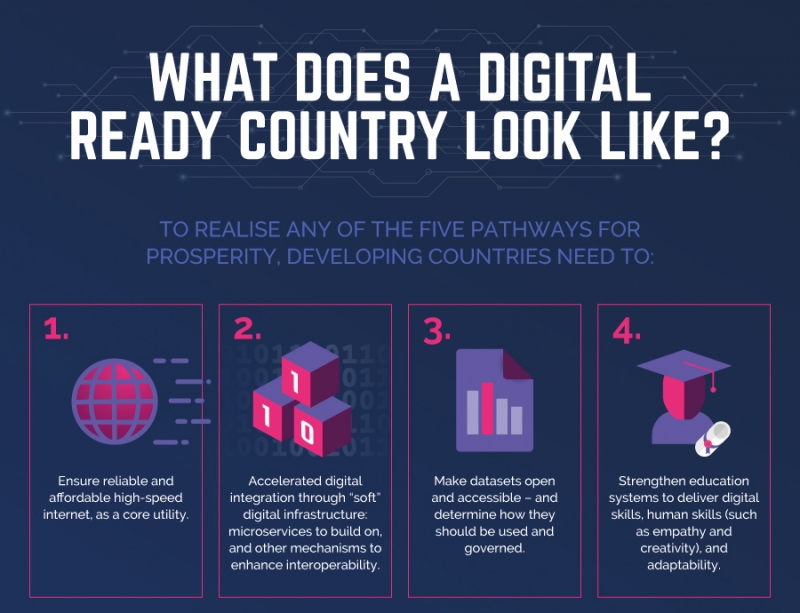

Responding positively and swiftly to technological change requires, first vision, purpose and strategy. Clearly new technologies will create winners and losers; as will government policies and private sector business decisions. Some of these policy priorities are in tension with each other: pro-competitive regulation can stifle (some) investments; public education will be funded by taxes, partly raised from creative entrepreneurs. The solution, we think, is to escape policy paralysis by co-designing a national strategy for inclusive growth through concerted and broad-based dialogue between government, the private sector and civil society.
This dialogue should provide a voice for young people, the ‘digital natives’, allowing them to express their aspirations and to contribute their unique perspective and skills as the first generation born in the digital age. Delivering such a national strategy and capitalising on technological progress are not just questions of domestic policy; achieving these aims will also require international co-operation.
National policymakers, businesses and citizens in developing countries have real agency over how technological progress will impact on their economies and their societies. They must act, domestically and internationally, to chart a course for inclusive growth in a digital age.
